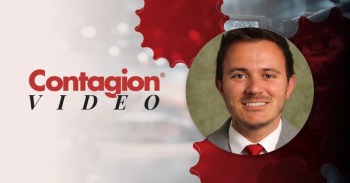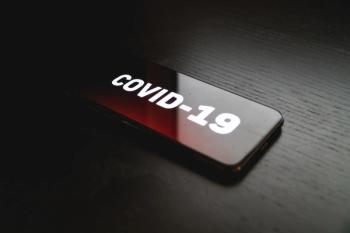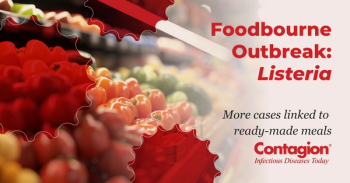
Top 5 Contagion® News Articles for the Week of September 24, 2017
Stay up-to-date on the latest infectious disease news by checking out our top 5 articles of the week.
#5: A Cost-Effective Method to Decrease HCV Infections in High-Risk Communities
Routine, rapid hepatitis C virus (HCV) testing during clinical visits appears to be cost-effective in settings in which there is a high prevalence of HCV and injection drug use, a new study has found.
At present, recommendations from the Centers for Disease Control and Prevention (CDC) advocate for routine, risk-based HCV testing for young adults who inject drugs, and one-time testing for those born between 1945 and 1965. However, given that CDC data suggests that the vast majority of HCV cases in the United States are linked with injection-drug use, it has been hypothesized that more routine testing in these at-risk populations could increase diagnosis and, therefore, proper treatment of the disease.
In a study published on September 9, 2017, in the journal Clinical Infectious Diseases, researchers from the Boston University School of Medicine and School of Public Health, assessed the “clinical benefit and cost-effectiveness” of routine HCV testing for youth in high-risk communities—or those with a high incidence of the disease.
Read more about the method,
#4: Janssen Submits NDA for Once-Daily, Single-Tablet Regimen to Treat HIV
Today, September 25, 2017, Janssen Research & Development, LLC announced that they have submitted a new drug application (NDA) for a darunavir-based, once-daily, single-tablet regimen for the treatment of HIV in adults and adolescents who are 12 years of age or older.
“If approved, [darunavir 800 mg/cobicistat 150mg/emtricitabine 200mg/tenofovir alafenamide/ 10mg] D/C/F/TAF will be the only complete regimen to deliver the potential adherence advantages of a single tablet regimen (STR) with the high genetic barrier to resistance of darunavir and demonstrated safety profile of TAF,” according to the press release.
Read more about D/C/F/TAF, by clicking
#3: CDC Warns STDs Have Reached a Record High
The Centers for Disease Control and Prevention (CDC) issued a press release this week stressing that sexually transmitted diseases (STD)—which have been increasing at an alarming rate for years—have now reached a record high in the United States.
The CDC’s Sexually Transmitted Disease Surveillance Report, released on a yearly basis, shared that over 2 million cases of chlamydia, gonorrhea, and syphilis were reported in 2016 in the United States: “the highest number ever.”
Read more about the growing number of STDs,
#2: 2016 Norovirus Outbreak in Spain Linked with Bottled Water
A recent Dispatch article published in the Centers for Disease Control and Prevention (CDC)’s Emerging Infectious Diseases journal, offers insight into a large norovirus outbreak that sprung up in Spain in 2016 that had been linked with bottled spring water.
The Public Health Agency of Catalonia (ASPCAT) reported a staggering 4136 cases of gastroenteritis from April 11, 2016 to April 25, 2016. Of the 4136 cases, 6 individuals required hospitalization. The CDC defines a “case-patient” as an “exposed person who had vomiting or diarrhea (3 or more loose stools within 24 hours),” as well as 2 or more of the following symptoms: nausea, stomach pain, or fever.
ASPCAT investigators traced back the outbreak to contaminated bottled spring water in office water coolers. The water came from a source in Andorra, a small independent principality located between Spain and France. Norovirus is a “very contagious virus,” according to the CDC, and it is common for individuals to become infected by eating contaminated food. Although it’s possible to be infected by consuming contaminated drinking water, this mode of transmission is “rare in developed countries,” according to the article.
Read more about the CDC's investigation of the 2016 norovirus outbreak in Spain,
#1: Elbasvir & Grazoprevir Highly Efficacious in HCV Patients with Inherited Blood Disorders
Direct-acting antiviral (DAA) therapy has become the gold standard for treatment of hepatitis C virus (HCV) infections since its introduction in 2011. DAA therapy has proven effective in hard to treat patient populations, including those co-infected with HIV and HCV. However, very little data is available on the efficacy of DAA therapy on HCV patients with inherited blood disorders (IBLDs). In a study published in the Journal of Hepatology, principal investigator Vito Di Marco, MD, professor of gastroenterology at the University of Palermo in Italy, and his colleagues examine the efficacy of a ribavirin-free DAA therapy regimen on HCV patients with either sickle cell disease, thalassemia, or hemophilia/von Willebrand disease.
The study utilized a combination of 2 DAA drugs, elbasvir (EBR), a nonstructural 5A inhibitor, and grazoprevir (GZR), an HCV NS3/4A protease inhibitor. This combination has been approved by the US Food and Drug Administration (FDA) for the treatment of HCV patients with genotypes 1 or 4 and has been shown to be highly effective even in patients with liver cirrhosis and chronic kidney disease. The phase 3, randomized study, called C-EDGE IBLD, included female and male patients with HCV genotypes 1, 4, or 6. Patients with compensated liver cirrhosis and those co-infected with HIV were also eligible for the study. Furthermore, patients that had never received HCV treatment, those that previously received interferon-based therapy, and those that were intolerant to interferon-based therapy plus ribavirin were included. Patients were excluded if they had decompensated liver disease, were co-infected with the hepatitis B virus, or had a history of substance abuse or a history of cancer.
Patients were randomly assigned to 2 groups, those that received immediate treatment and the placebo group, which was given the treatment later. Patients, as well as investigators, were unaware of the assignments each patient received. Those in the immediate-treatment group received 50 milligrams of EBR and 100 milligrams of GZR for 12 weeks. Those in the placebo group received placebo tablets for 12 weeks, followed by a month-long follow-up period, and then they received 12 weeks of EBR and GZR. The primary endpoint of the study was if patients reached a sustained virologic response (SVR) after 12 weeks of treatment.
Read more about the study,
Newsletter
Stay ahead of emerging infectious disease threats with expert insights and breaking research. Subscribe now to get updates delivered straight to your inbox.































































































































































































































































































